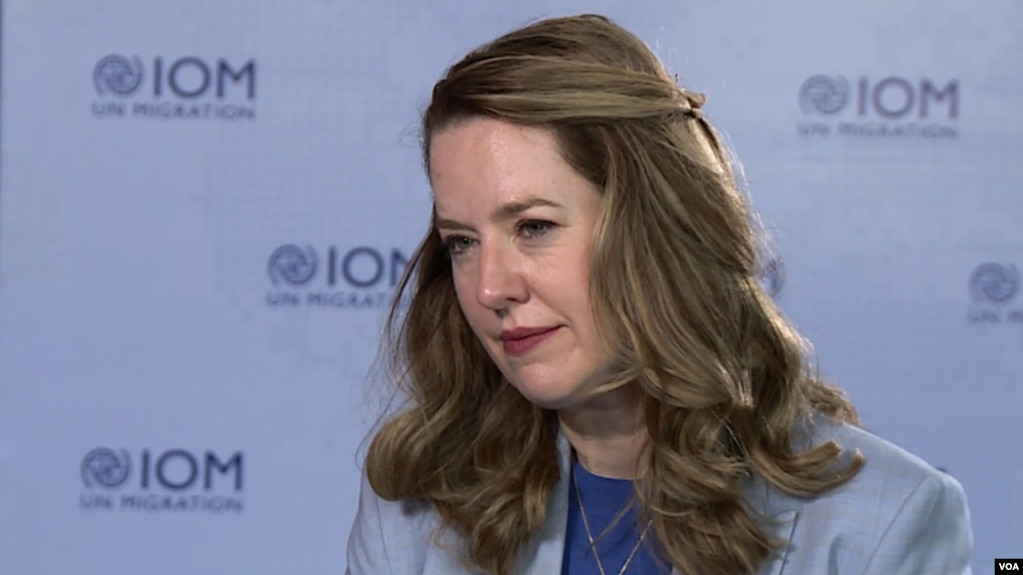The so-called eastern route runs from the Horn of Africa to Saudi Arabia and the Persian Gulf by way of Ethiopia, Djibouti, Somalia and Yemen. Migrant workers, mainly from Ethiopia but also from other East African countries, travel over the route in search of jobs and economic opportunities.
At least 48 people died and 75 others were missing or presumed dead after smugglers forced migrants off two boats on October 1 in the Red Sea, off the coast of Djibouti. Almost all of the migrants were Ethiopians.
Speaking to VOA during the IOM’s regional review of the Global Compact for Safe, Orderly and Regular Migration held Wednesday in Ethiopia, Director-General Amy Pope said more people were being harmed on the eastern route than on any other migration route in the world, though it does not get a lot of attention.
“What it demonstrates is that we need to build up safe and regular ways for people to move because we know, for example, within the Gulf, there are tremendous opportunities for people to go and live and work, whether they're going in low-skilled sectors or they're going in higher-skilled sectors,” she said, commenting on the recent deaths off the Djibouti coast.
“There should be no reason for people to have to move through a smuggler, through a trafficker, a route that will subject them to exploitation and often abuse,” she said.
Pushed into the sea
Frantz Celestin, IOM regional director for East, Horn and Southern Africa, told VOA's Horn of Africa Service that smugglers forced migrants on two fully loaded boats to jump into the sea about 3 a.m. on October 1.
In an email, Celestin said the first boat, which had two pilots, was carrying 100 migrants voluntarily returning from Yemen to Djibouti who had paid for and planned their trip.
“The two pilots forced them off the boat, even though they had not reached the shore. There were 99 migrants who survived, and one woman died. The pilots were able to flee the arrival of the coast guard and return to Yemen,” he said.
The second boat, with three pilots, had 220 migrants on board who were forced to return from Yemen to Djibouti. They were being brought back either from prison or from several other places in Yemen, Celestin said. Two or three of the migrants were returning voluntarily.
“They forced, pushed or threw the migrants into the sea far from the shore. The pilots abandoned their boat and fled by land," Celestin said. "The Djiboutian coast guard brought many survivors from the sea point back to shore.”
One of the survivors, who did not want to be identified for safety reasons, told VOA Horn of Africa that the pilots asked them to “get out.”
"They asked us to get out of the boat into the seawater," the survivor said, adding that the Yemeni pilot told them how to get to land. “But all of us could not make it as it was dark and lack of swimming experience."
“We are peaceful people who want to work and help our families back home,” a second survivor said.
Root causes
At the regional review, Pope called on the international community to address the root causes of migration, including conflicts, development and climate shocks.
“The drivers of migration are really complex; some of it is about peace. We see, for example, the situation in Sudan, where there are millions of people who have been pushed out of their homes. The solution, the root cause of that, is the conflict, and until there's peace in Sudan, then people will continue to move,” she said.
“In other cases, it's the impact of poverty and the lack of economic opportunity for people at home, and the answer to that is about development and governance,” Pope said, adding that countries need to assume responsibility and address climate change, which she identified as one of the drivers of migration.
“On the one hand, it means that governments need to take seriously their obligations to mitigate the impact of climate change, but importantly, that is just not going to be enough, because we know people are being forced to move now,” she said.
“So, working with communities to adapt to climate change and ensuring there are resources to help people who've already been displaced by climate change will be critical moving forward.”
Pope urged governments to work together to ensure people vulnerable to exploitation — especially people who are being recruited by smugglers and traffickers — can migrate safely and obtain the information they need to access a regular pathway for migration.
*This story originated in VOA's Horn of Africa Service.







